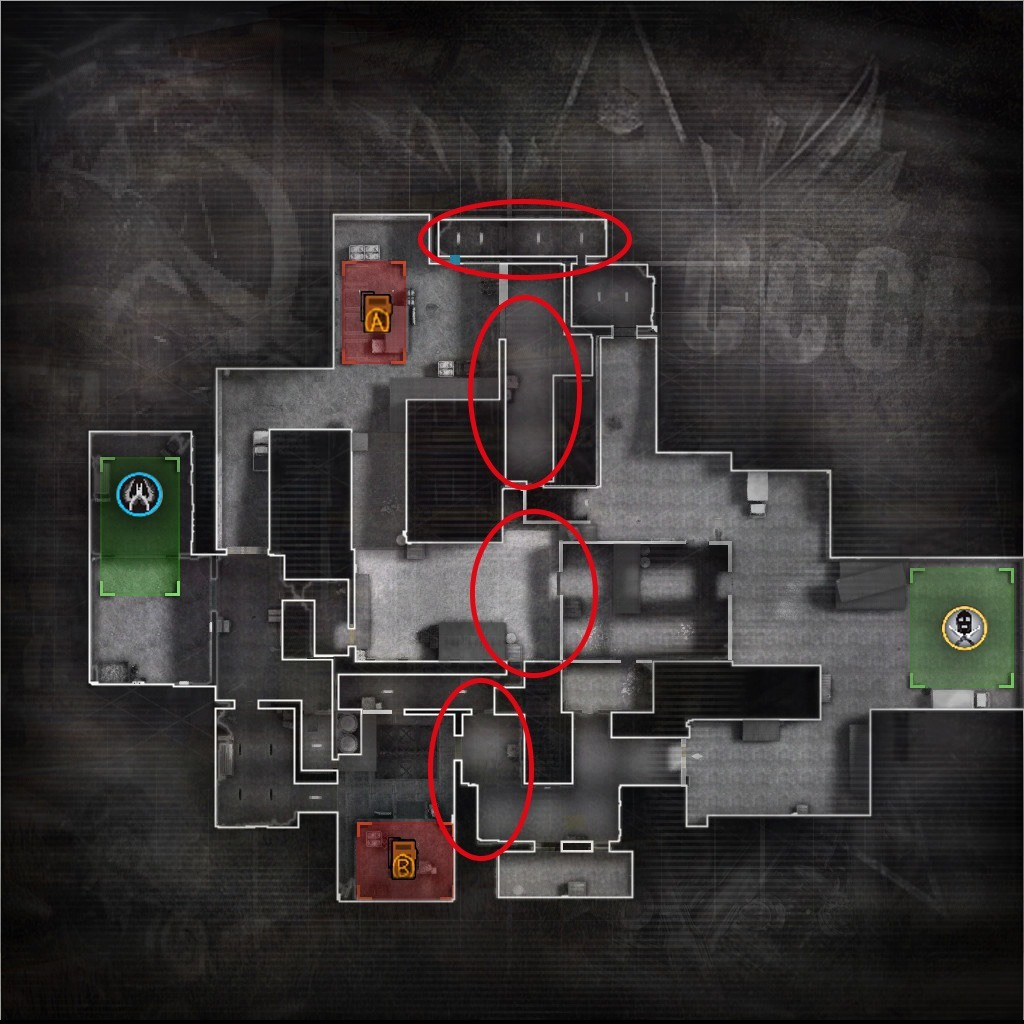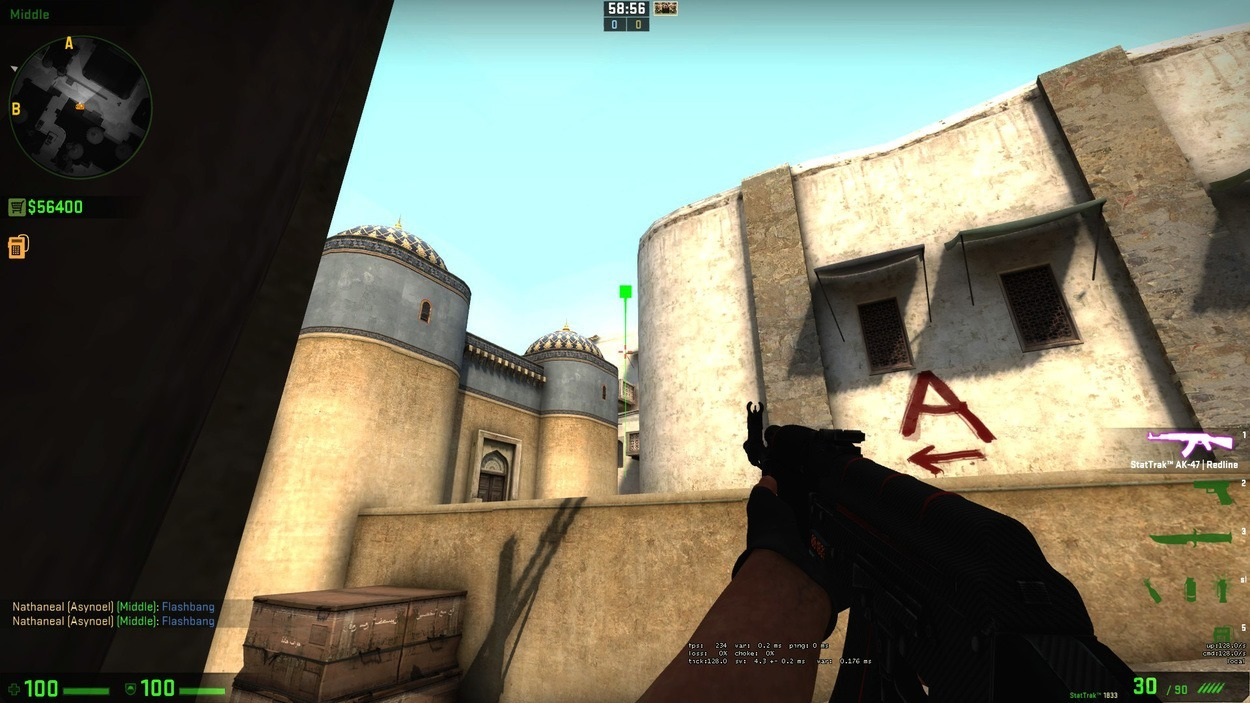Default strategies in CS:GO on T-side: Why, How and When?
Out of ideas as terrorists? Try playing default.
Out of ideas as terrorists? Try playing default.
We all know the feeling: You are in a matchmaking game on T-side and no one is able to muster up the courage and grab the scepter of in-game leadership. Your MM buddy and you tell the team that you are going to work the B site. 45 seconds later you secured B, killed two defenders and spam voice-coms with “B clear!” only to notice that two other members of the team took the bomb to A and died there, all while the fifth member of your team is holding short, ramp or middle.
These situations happen on all skill levels. In silver, on global and it's even observable in the FPL. However, the frequency of such chicken-runs that are T-sides without proper strategy decline the higher the skill level of players. Not only do better players have a finer understanding of angles to hold, when and where to push and how to do so, but they also boast a better understanding of the played map as a whole.

This understanding of the map is a huge part in the skill difference of Counter Strike players. While the better shot will win most aim battles, the better players and teams will choose positions and setups that enable them to pick favorable battles at important choke-points. In general, these tactical points exist at all places where CTs and Ts tend to meet, like entrances to bomb-sites or spots that provide a lot of map control (e.g.: mid on cache or mirage). The team that is controlling those key positions can either plant the bomb or – from the opposite viewpoint – stop the terrorists from entering or rotating to a bomb-site.
And with that said, we can explain the significance of a default setup in CS:
Defaults offer a reliable and easy way to execute tactic, to gain control of the major choke points on the map and thus provide a tactical advantage for the team.
You might now ask, why it is important to control larger portions of the map, when you can just brute force your way through a specific choke-point (“Rush B!”). While this is a valid strategy for some rounds and often done to great success in matchmaking as well as professional games, an adept opponent team won't take long to figure your rushes out and counter them with stacks and grenades. Having map-control, however, enables terrorists to execute onto a bomb-site from different angles, adverting possible crossfires from the opposition and making the spot much harder to hold.
Further, knowing a default way to set up a t-side round on a specific map helps you greatly to spot possible liabilities in your teams play. You are in a MM game on dust2 and all four of your members slowly go towards A and mid? Better set up shop in upper dark and greet that pesky, backstabbing CT with an AK-bullet to the face. Everybody hates loose ends, so tie yours up and cover your angles.
When setting up for a default T-strategy, one has to differentiate pugs und matches done in a set team. Teams, for the most part, communicate on a different level than random players do and thus open up the possibility for maneuvers like pop-flashes and coordinate trades.

In turn these enable the Terrorists to take control of angles, that were otherwise favorable for the guys in blue – which is the reason why you see many maps that were formerly known as CT-sided turn into T-sided maps on the pro level, but I digress.
Of course a team, or at least exceptional talkative matchmaking buddies, are also able to communicate who plays which position on the map. A process which is usually done in the beginning of the CT half but shamefully neglected when starting with the Glocks. People are better at playing certain angles than others, no matter on which side and you should not be afraid to communicate your preferences.
As an example of a default setup, let’s look at everyone’s favorite sandbox: de_dust2. The video from Team Liquid’s adreN above shows a solid T-side default strategy for the map. The gist of it is pretty simple: you gain the most map control and resulting tactical versatility in sending one player long, catwalk, upper, lower/mid and one non-assigned “free agent”. While the four people hold their angles and do the proper grenade work, the free agent can either take mid control or push with one of the players to ensure trade-frags. With this setup in place, the Terrorists are free to hit any choke point and bomb-spot they please.
Yet, however strong your map control is at that point, losing duels and taking unfavorable battles will still ultimately lose you most rounds. Taking our de_dust2 example: As the long player, holding pushes in a safe angle is fine, jiggle-peeking to see if that 11-4-3 AWP player is still there is fine, pushing out and making it 12-4-3 is not.
It is true, that you probably will not get the guy who called “gg” after you lost the pistol round, to play a proper default. MM is hugely momentum based and psychological factors can be even more important than great aim or positioning when playing with strangers. Nevertheless, asking people where they prefer to play on T-side and trying to establish a proper default will not only raise your chances of winning tremendously, it will also make your game more enjoyable. As it turns out, distracting two players on long while your team is already planting at B can be very satisfactory.
Defaults are an important tool for every versatile CS:GO player, but are in no way the only one in the box. Rushes or specific executes on bomb sites with smokes can be as effective or even better depending on the situation. But for all that, those will not work five times in a row and defaults still provide a stronger baseline tactic than those strategies.
In the end, Counter Strike on its most trivial level still comes down to who hit that headshot first. We all whiff our sprays from time to time or aim like we’re playing with a steering wheel and pedals. Intelligent strategies, game-sense and positioning minimize your dependency on pure aiming and that is where they can shine, even for newer players.
Nevertheless, you should steadily work to improve your technical skills in CS:GO and you can find all the tools and guides you need for that in the other guides here at Team Dignitas!
If you’ve liked this introduction to playing default on Terrorist side, join me next time when we will take a look at the default of Team EnVyUs on de_cache, including roles for each player, the used angles as well as grenades.